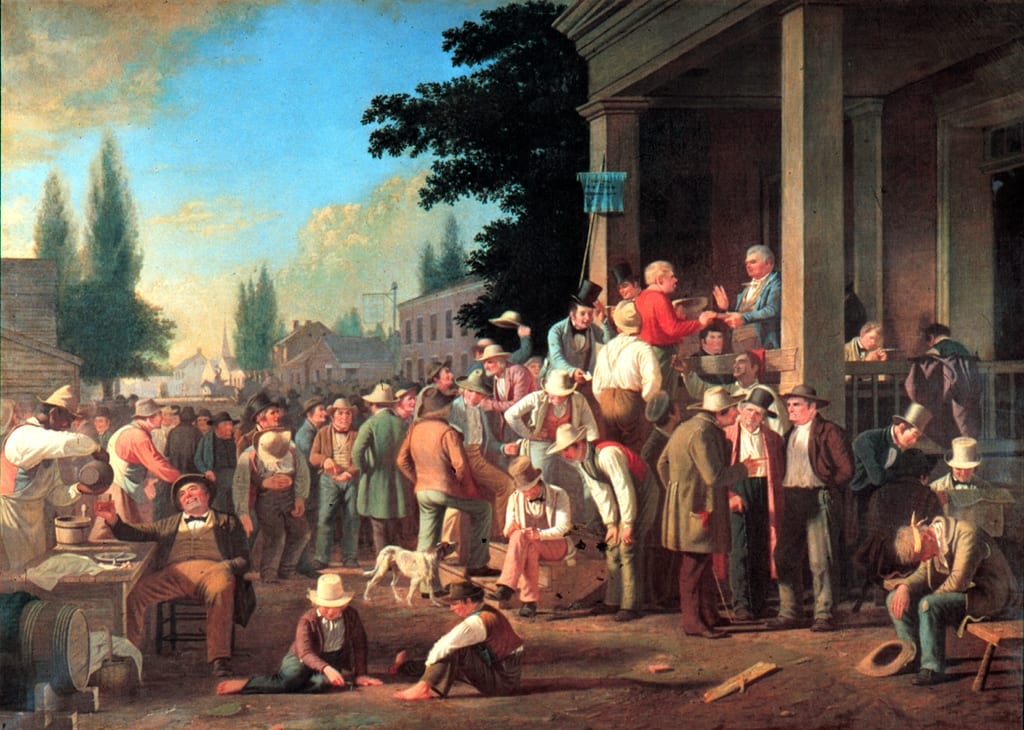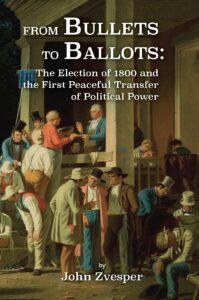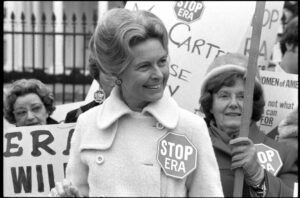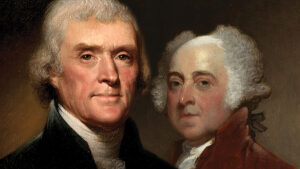
Introducing New Materials about the Election of 1800
Teaching American History is proud to introduce our latest volume, From Bullets to Ballots: The Election of 1800 and the First Peaceful Transfer of Political Power
Now available in our bookstore!
Why study the election of 1800?
In 1800, the American people did something no people had done before. They carried out a peaceful transfer of contested political power with a democratic election. This achievement did not follow inevitably from the arrangements for presidential elections established a decade earlier, in the Constitution. In fact, during most of the decade prior to the election of 1800, Republicans and Federalists had waged a bitter partisan contest that split Americans into hostile factions, and destroyed personal friendships. Each faction accused the other of treachery and treason. Newspapers and pamphlets spread falsehoods and slanders, not sparing even President George Washington. At one point during the decade, threatening partisan crowds gathered outside Washington’s home in Philadelphia. As the election approached, the Federalists, the party in control of the federal government, passed laws that limited free speech. Editors were thrown in jail. Even after the election, some partisans claimed the election was invalid, while others sought to change the procedures by which the votes, including electoral college votes, would be counted. Two states even put their militia on alert, as partisans talked of a resort to force. Yet, on March 4, 1801, Thomas Jefferson peacefully assumed the duties of president, as prescribed by law.
The Importance of Political Parties
John Zvesper’s From Bullets to Ballots: The Election of 1800 and the First Peaceful Transfer of Political Power explains why the peaceful transfer of power occurred, despite all the partisan acrimony—and worse—of the decade that preceded it. To do this, Zvesper recounts the political history of the 1790s with admirable clarity and concision. He not only relates the events that unfolded, but also analyzes the principles and political calculations of Jefferson, Madison and Hamilton. Central to the history Zvesper relates is the emergence of the first political parties. As Zvesper tells this story, he explains the necessity of parties, their advantages and disadvantages, and their relation to public opinion. The topic of public opinion leads Zvesper into an insightful discussion of the rhetoric and actions of the key political figures of the day. This discussion in turn brings the reader to a deeper understanding of principled partisanship and its limitations, in light of the foundational principles of American politics announced in the Declaration of Independence. Zvesper’s account is enlivened with telling anecdotes and quotations. Behind his striking command of the historical materials, however, is a firm grasp of the profound significance of the election of 1800, and what it means for the possibility of self-government today. The precedent for the peaceful transfer of power set by the election of 1800 has been so authoritative that it has been broken only twice in our history, after the elections of 1860 and 2020. All in all, Zvesper has written the best short—perhaps simply the best—account we have of the politics of the 1790s and the election of 1800.

Teaching American history is pleased to bring From Bullets to Ballots to the attention of history and government teachers, and to all who share an interest in the history and perpetuation of self-government. In support of this republication, we have made related materials available in an exhibit on teachingamericanhistory.org, including documents which Zvesper references, as well as others that help us understand the story he recounts. The website exhibit also provides information on election results between 1790 and 1808, showing the shifting fortunes of the Federalists and Republicans. It shows a steady increase of support for Republicans that led to Jefferson’s victory in 1800, followed by the Federalist party’s disappearance. Yet the story of political parties and self-government in America had only just begun.
You can find “From Bullets to Ballots” in both print and online format in Teaching American History’s bookstore.



